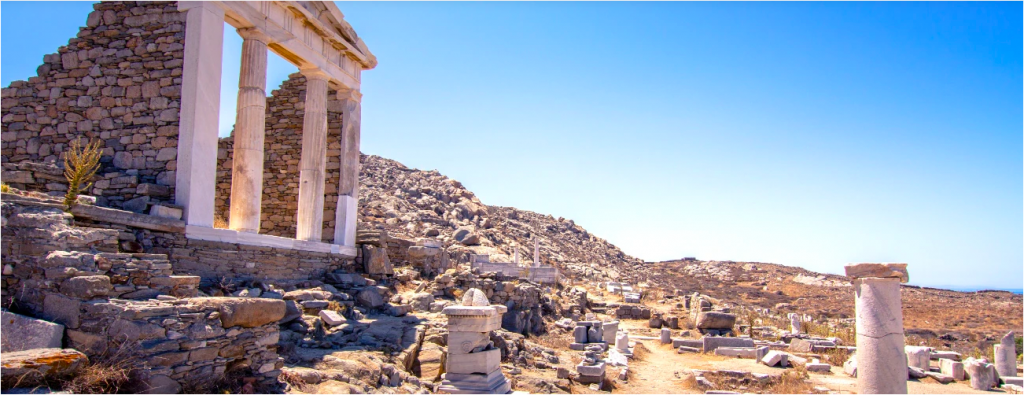The greek island was named after the son of the mythical king Anius of Delos, son of Apollo and Reo. Its history dates back to the ancient times as it relates to the neighbouring island of Delos that used to be the epicentre of Ancient Greece since it was considered to be sacred.
As stated in mythology, one of the twelve tasks of Hercules was to defeat the Giants, after ending the battle, he threw them into the Aegean Sea, where they turned into stone shaping the island of Mykonos.
The ancient Mykonos was advanced and had an admirable culture, one of the earliest amphora was excavated on the island, known as the Mykonos vase, depicting the Trojan war.

Regarding the modern history, Venetians, Russians, and Ottomans occupied the island during distinct historical times. However, since the Greek war of independence, the island is part of Greece. Mykonians participated in the greek revolution providing ships, armaments, and volunteers to fight of the oppressing Ottoman Empire. A significant figure to such a historical event was Manto Mavrogenous, as she economically boost the revolution contributing to its successful outcome.
At a subsequent time, Mykonos gained commercial power and aided the economy by weaving textiles, which was an important source of income to the locals. The textiles were of high quality, hence it was traded around the country and abroad.
Concerning tourist activity, it begun in the 1960s as it was visited by artists and afterwards by hippies. The archaeological site of Delos moved the interest of tourists, thus Mykonos has become one of the most popular destinations globally.


